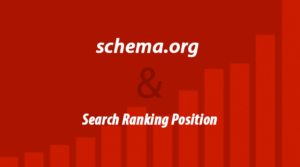SEO Phrases that All SEOs worth Their Salt Should Know

I am sure if you are interested in knowing about SEO or making use of search engine optimization, your head is filled with lots of phrases related to this domain. I know it’s taxing to keep track of all of them; this job is made even more difficult by the fact that many of these phrases (representing specific SEO techniques) become redundant in due course and some other phrases take their place.
But what one has to do, one must do. I am sorry if I sound hackneyed, but that is the truth. It’s important to keep track and know about phrases that are going to have a bearing on your SEO efforts.
So without getting further into the whys and why nots, let’s get right into discussing some SEO phrases or terms, call them what you will.
Google Dance
I am sure Google has a sense of humor. It gives all its “terrifying” updates the names of amazingly docile animals, and here’s another proof of its humor. Did you know that the period in which Google’s monthly updates were pushed to their search index was called – Yep, Google Dance! Yes, those major changes in your search engine results that made you “dance” well, guess what, it was called – Google Dance. I am saying was because you don’t hear this phrase nowadays.
This is because Google updates today, take place throughout the month, i.e. it is updated many times throughout the month. So, webmasters can wake up to a Google update almost once a day. So, in effect, you are dancing every day, making this phrase irrelevant.
But here’s the thing, although your website pages, especially those that are updated are being crawled constantly by Google, there will be a slight variation in the ranking during the course of the month. BUT, there is always that odd site that experiences a wild swing in the rankings at the end of the month – So, Google Dance is definitely alive, but not as kicking as it was a few years ago.
It’s a phrase that definitely needs to be kept in mind.
Anchor Text over Optimization
Experienced SEO webmasters are well aware of this term, but those that are not very experienced in all things SEO might be wondering what ‘Anchor Text Over Optimization” is all about; this is a phrase that you might be coming across a lot these days.
[box type=”note”]What this phrase means is that you are building numerous links with your targeted anchor text. This results in a situation wherein the optimization of your anchor text is no longer improving your rankings.[/box]
My experience says that if you want a normal link profile, your optimization should include a mix of target and not-targeted anchor text. So, for every ten links that you build, you can think of having around 6 targeted anchor texts and 4 non-targeted. A 6:4 ratio in this regard has worked for me.
Think of over-optimized text as a ticking time bomb that will go off any second. So, while optimizing, check for dead links and filter them out, don’t worry about no follow links, and keep the site wide links in mind and if you think anchor text distribution is skewed make the necessary changes.
Static URL
Static URL is the kind of URL that can be searched for on Google, using the file type ‘htm’; it will look something like this:
http://www.domainname.com/internet-marketing.htm
What this means is that there are no URL parameters in a static URL and it does not change. The difficult part of updating information in such a page lies in the fact that all such pages need to be hard coded. So, webmasters generally don’t use a static URL on a page which needs to be constantly updated with information.
Dynamic URL
Simplistically it’s the kind of URL that is versatile and changes regularly. Dynamic URLs are easy to spot because they have characters like? =, / etc and, they look something like this:
http://www.domainname.com/forums/thread.php?threadid=121312&sort=date.
These URLs are typically used when all content on the site is stored in a database and is only made available on demand. One of the biggest disadvantages of such URLs is the fact that there is a chance that the same content is found across different URLs, and this is one of the major reasons why some SEO webmasters prefer the use of static URLs when possible.
Now, here’s a question for you? Which URL do you think scores better when it comes to SERPs?
Well, both have their own advantages, and the thing is that the Googlebot can now efficiently handle both URLs, but if you are looking at better click through rates then a static URL does score over a dynamic one.
And now let’s end it with a tip – There are some webmasters that try to change the dynamic URL in a manner that makes it look static. Well, it’s better not to do this, because Google doesn’t want you to hide parameters.
PageRank Sculpting
Well the phrase sounds artistic and there is definitely some art involved here. Say you have a page with PR of 5 and it’s not that unimportant. But, you have another page that is ranked 3 but whose rank matters as it does have some significance to your online presence. It’s not a good situation to be in is it?
This is where page rank sculpting comes into the picture whereby you can optimize a page in such a way that the PageRank flows from the higher ranked page to the one that is lower ranked. Your optimization should make Google ignore the high ranked page and focus only on your valuable page. What this process basically does is that it ensures that the number of high PageRank pages on your website goes up by flowing high PR to low PR pages.
Google Honeymoon Period
Think of it is a bonus for a site that has just been launched. As soon as a website has been launched and its web pages have got indexed, webmasters might see these web pages rank right at the top of the SERPs, for a particular keyword. This is called the honeymoon period for the webpage/s because this ranking is temporary, and within a short time it will be given the rank that is its due.
Why this happens is still a matter of conjecture, but there is a chance that Google is vetting the page/s in terms of relevancy and whether the page is relevant to its corresponding keyword phrases or not.
Link Juice
Wouldn’t you rather eat a juicy steak, than something that is dry and tasteless? My apologies to all the vegetarians out there, but I simply can’t think of a better example, because this is what link juice is all about.
Search engines need to find your web pages juicy enough so that they are at the top of search engine page results (getting tired of writing SERPs all the time), and this juice is provided by getting links from credible sources. So, if your brand new web page gets an inbound contextual link from a highly credible source, your web page gets some credibility. So essentially, what you need to do is generate inbound links from sources that Google trusts (high PR sites and those that have relevant content)
Collectively these links are termed the link juice that you are essentially going to offer Google to drink. I have got to hand it to whoever coined this phrase – Creative and right on the button.
I hope I have been able to explain these phrases clearly because to be honest, each of these phrases warrants a blog post to themselves. It is advisable that you go through other sources of information as well, so that you get an even better idea of what these phrases are all about. Getting as acquainted as you can with a phrase will definitely give a lift to your SEO efforts.
Image © mopsgrafik – Fotolia.com
 SEO is Evolving: Trend You Need to Know About [Infographic]
SEO is Evolving: Trend You Need to Know About [Infographic] Does schema.org Markup Really Improve Google Search Ranking Position?
Does schema.org Markup Really Improve Google Search Ranking Position? How SEO Services Can Help Increase Your Website Traffic
How SEO Services Can Help Increase Your Website Traffic The Impatient Newbie’s Guide to SEO
The Impatient Newbie’s Guide to SEO
{ 28 Responses }